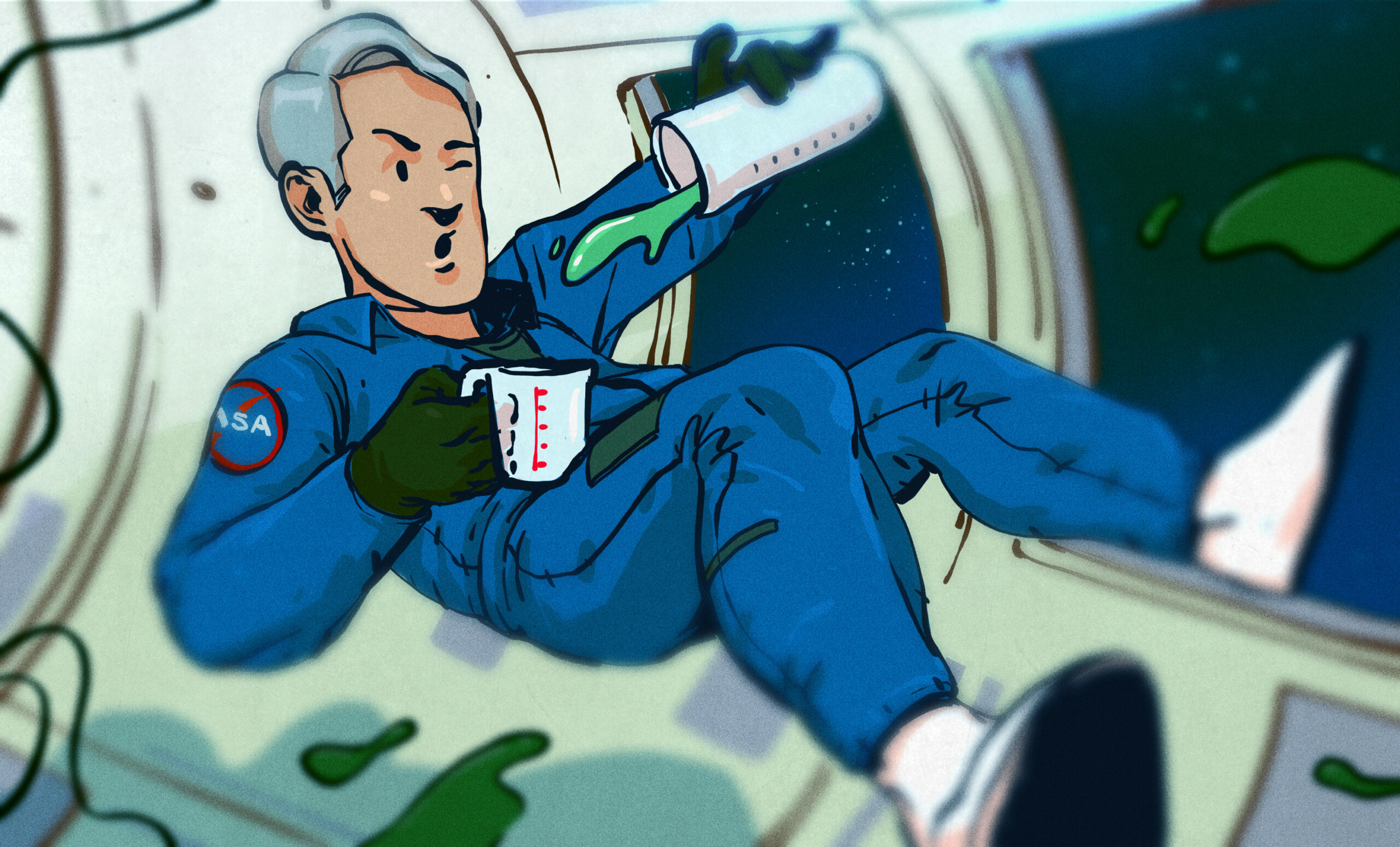A recent project named “pISSStream” has drawn attention for its unique approach to monitoring liquid levels within the International Space Station (ISS). This initiative, which utilizes NASA’s public telemetry stream, specifically tracks the level of the urine tank aboard the ISS. While the project may appear whimsical, it highlights the intriguing challenges engineers face when measuring fluids in microgravity environments.
Understanding fluid dynamics in space is essential, particularly because traditional concepts of “levels” do not apply. Instead of seeking a bottom, fluids in microgravity behave according to surface tension and capillary action. This fundamental change means that astronauts can manipulate water into floating spheres, a phenomenon often showcased in videos from the ISS.
Engineering Challenges of Liquid Measurement
Historically, NASA has employed various methods to gauge liquid levels in spacecraft. During the Apollo missions, for instance, the Propellant Utilization Gaging Subsystem (PUGS) was utilized to keep track of fuel and oxidizer levels. This system incorporated capacitive probes within the fuel tanks. These probes measured capacitance, which fluctuated based on the liquid level. The Apollo missions demonstrated that fluid behavior in microgravity could be monitored effectively, although not without challenges.
For modern rockets, including those developed by SpaceX, measuring liquid levels involves innovative techniques. Ullage motors, which provide acceleration to help settle propellants to the tank’s bottom, play a critical role. These motors ensure that fuel and oxidizer can be accessed when needed, particularly during complex maneuvers or engine restarts. While measuring liquid levels might seem straightforward, variations in fluid behavior during free-fall present unique engineering hurdles.
In many cases, the remaining volume of propellants is inferred using flow sensors that track the rate of consumption during engine operation. SpaceX employs this method, allowing engineers to maintain a rough estimate of fuel levels without requiring direct measurement instruments.
Advanced Techniques for Accurate Gauging
In the context of the ISS, the method of gauging the urine tank level mirrors this flow accounting approach. The system resets the volume to zero with each resupply mission, and every operation of the Waste & Hygiene Compartment results in the addition of approximately 350 ml to 450 ml of liquid into the holding tank. By tracking the number of flushes and measuring the output to the Urine Processing Assembly (UPA), which recycles urine into potable water, engineers can estimate the tank’s liquid level accurately.
Other techniques have emerged for liquid gauging in microgravity. The pressure-volume-temperature (PVT) method uses measurements from pressure and temperature sensors inside a tank in conjunction with the ideal gas law to estimate liquid volume. While effective, this method’s accuracy decreases over time due to sensor resolution limitations.
A more recent advancement, Electrical Capacitance Volume Sensing (ECVS), employs arrays of electrodes within the tank to measure the dielectric constant of the mixed-phase fluid. This method provides a detailed map of the fluid’s location, which is invaluable for understanding how liquids behave when floating in free-fall.
Another promising technique is Radio Frequency Mass Gauging (RFMG). This system uses a small antenna to send radio frequency signals into a tank. The reflections from the liquid within can be analyzed to determine the volume present. RFMG was tested aboard the ISS and later used in the lunar lander from Intuitive Machines, which successfully touched down on the Moon in February 2024, showcasing the method’s effectiveness in critical space missions.
NASA’s innovative approaches to measuring liquid levels in space not only enhance operational safety but also contribute to our understanding of fluid dynamics in microgravity. As space exploration advances, these techniques will prove vital for future missions, ensuring that astronauts have the resources they need to thrive beyond our planet.
